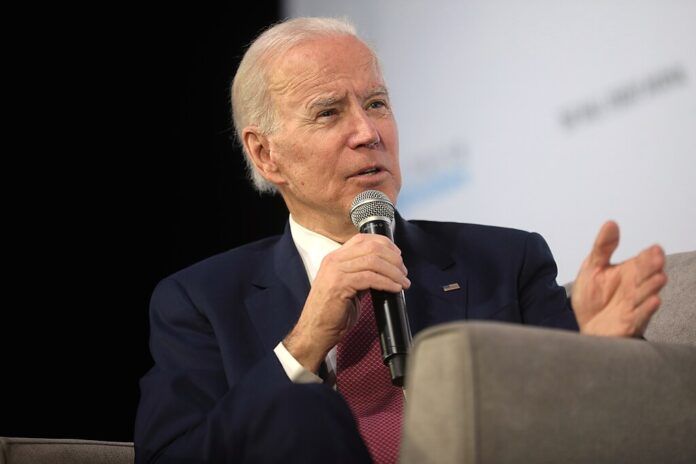The Biden Administration announces significant price reductions for top prescription drugs under Medicare, projecting $6 billion in savings in the first year as part of the Inflation Reduction Act
On August 15, 2024, President Joe Biden and Vice President Kamala Harris heralded a significant achievement in Medicare drug pricing. At an event in Largo, Maryland, they celebrated the negotiation of lower prices for ten top-selling prescription drugs, with reductions of up to 79%. This move, part of Biden’s Inflation Reduction Act, is projected to save Medicare approximately $6 billion in its first year.
The Inflation Reduction Act, signed into law in 2022, represents a groundbreaking shift, allowing Medicare to negotiate prices for some of its most expensive covered drugs. This authority, previously unavailable, will see new prices taking effect in 2026. Biden, alongside Harris, hailed the achievement as a victory over pharmaceutical companies. “We finally beat Big Pharma,” Biden proclaimed.
Embed from Getty ImagesHarris, who played a crucial role in passing the law with her tie-breaking Senate vote, emphasized the significance of Medicare’s new bargaining power. “My entire career, I have worked to hold bad actors accountable and lower the cost of prescription drugs,” Harris said. She highlighted how this new power enables Medicare to negotiate directly with drug manufacturers, aiming to make medications more affordable for Americans.
The new price cuts will impact several widely used drugs. For instance, Merck & Co’s diabetes drug Januvia will see a 79% reduction, while Novo Nordisk’s insulin aspart products will experience a 76% cut. Other drugs on the list will face price cuts ranging from 68% to 38%. Despite these reductions, the actual out-of-pocket costs for patients could still vary due to existing rebates and discounts not reflected in the new prices.
The announcement comes as the administration seeks to address concerns over high drug prices, a key issue for voters heading into the November 5 presidential election. Biden’s and Harris’s push for lower prices aligns with their broader campaign strategy to address economic concerns and improve healthcare affordability.
However, the move has sparked controversy. Republican leaders, including House Speaker Mike Johnson, have criticized the price cuts as “price fixing,” arguing that the policy will drive up healthcare costs and stifle innovation. The pharmaceutical industry also voiced opposition, with companies warning that the new prices might not significantly lower patient out-of-pocket expenses and could impact future drug development.
Shares of major pharmaceutical companies have responded variably. Eli Lilly saw a slight decline in its stock price, while companies like Amgen and Bristol Myers Squibb experienced modest gains. Analysts, such as BMO Capital Markets’ Evan Seigerman, suggested that the key factor for investors will be the difference between the discounted prices and the net prices after accounting for other discounts.
The administration’s decision to accept revised counteroffers for some drugs indicates ongoing negotiations. While some companies accepted the final offers, others are preparing for further discussions. Drug manufacturers have already filed lawsuits against the administration, arguing that the negotiations could hinder their ability to fund new drug development programs.
Looking ahead, the next round of Medicare drug price negotiations is set to begin in February, with 15 additional drugs to be reviewed. As the administration prepares to provide more details on the pricing process in the coming year, the impact of these changes on the broader healthcare landscape remains a topic of considerable debate.
Analysis:
Political:
The Biden administration’s negotiation of lower Medicare drug prices represents a significant political manoeuvre, particularly ahead of the November elections. By securing substantial discounts, Biden and Harris aim to bolster their electoral prospects by addressing a major voter concern: high prescription drug costs. The policy not only highlights the administration’s commitment to healthcare reform but also positions the Democrats as champions of affordable medicine. The criticism from Republicans underscores the deep partisan divide over healthcare policy, with opposition arguing that such measures could undermine market innovation.
Social:
The new drug price cuts have important social implications. For millions of Medicare recipients, particularly the elderly who rely on expensive medications, the reduced prices promise substantial financial relief. The move also aligns with broader social trends favouring increased government intervention to curb high healthcare costs. However, there is concern about whether these price cuts will translate into actual savings for patients, as the pharmaceutical industry and critics argue that the impact on out-of-pocket expenses might be limited.
Racial:
The impact of these price reductions on racial communities is indirect but noteworthy. Historically marginalized groups often experience disparities in healthcare access and affordability. Lower drug prices could potentially reduce these disparities by making essential medications more accessible. However, the effectiveness of these changes in addressing racial inequities will depend on how well they are implemented and whether additional barriers to access remain.
Gender:
Gender-related impacts of the drug price cuts are not immediately apparent, but women, particularly older women who make up a significant portion of Medicare recipients, could benefit from reduced medication costs. Women are often primary caregivers and bear a significant portion of healthcare costs in households. Thus, lower prescription drug prices could alleviate some of the financial burdens they face.
Economic:
Economically, the price reductions are projected to save Medicare $6 billion in the first year and $1.5 billion in out-of-pocket costs for beneficiaries. This could lead to decreased overall healthcare spending and potentially reduce financial strain on Medicare. However, there are concerns about the long-term economic effects on the pharmaceutical industry, including potential impacts on innovation and drug development. The balance between immediate cost savings and future industry implications will be a critical area of focus.
